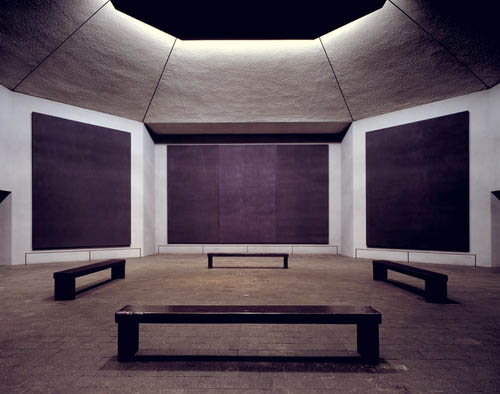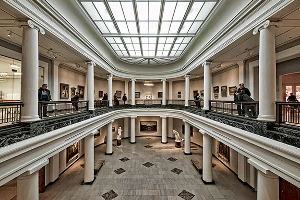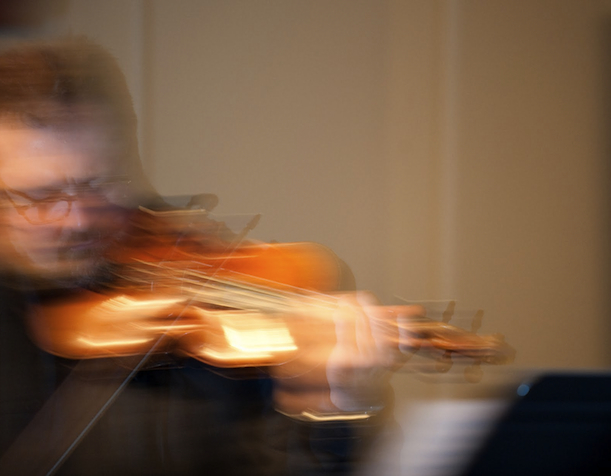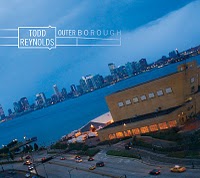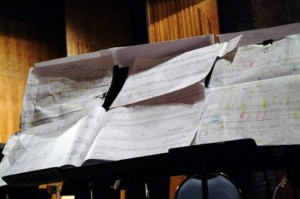 I am probably shooting my career in the foot by writing this, not to mention my standing in the D.C. arts community (such as it is), but it has to be said:
I am probably shooting my career in the foot by writing this, not to mention my standing in the D.C. arts community (such as it is), but it has to be said:
Michael Kaiser is just plain wrong about the state of the art.
Mr. Kaiser, the president of the Kennedy Center, writes in a recent article for the Huffington Post that “the arts are in trouble because there is simply not enough excellent art being created.” He bemoans the lack of innovative artists in a fit of nostalgia, saying that “when I was a young man we had Merce Cunningham and Martha Graham and Alvin Ailey and George Balanchine and Jerome Robins.” “We also had Bernstein and Rodgers and Stravinsky and Rubinstein and Horowitz and Tennessee Williams and…”
You’ll get no argument from me as to the greatness of those artists he mentioned. Mr. Kaiser, in succumbing to nostalgia for an idealized past, ignores the greats we have among us today. Today we have (I’ve never been interested in dance, so I’m afraid I can’t match him category for category with great contemporary choreographers, so I’ll throw in some filmmakers instead to keep to a dramatic art form) Paul Thomas Anderson, The Coen Brothers, Quentin Tarantino, Julie Taymor (as long as she stays away from stage adaptations of comic books, evidently) and Christopher Nolan. We also have David Lang, Steve Reich, TWO John Adams (Johns Adams? John Adamses?), Michael Daugherty, Michael Gordon, Stephen Hartke and Frederic Rzweski. We also have Valeri Gergiev, Brad Lubman, Marin Alsop, the Takacs Quartet, eighth blackbird and David Simon, Ronald D. Moore, David Mitchell, Jonathan Franzen, Mario Vargas Llosa, and these are just the “old timers,” the established artists whose work has been around now for some time and whose impact, while varied, is unquestionable.
Perhaps, however, it’s not a matter of names. A lack of innovation is also problematic. “Today,” he writes, “far more inventiveness can be found in popular entertainment than can be found in the classic arts. The embracing of new technologies and the willingness to try new things seems to have become more the province of rock music and movies than of opera, ballet and theater.”
I have to wonder what movies Mr. Kaiser has been watching or what rock music (other than, perhaps, Radiohead or The Fiery Furnaces) he’s been listening to. He does, I’ll grant him, have a point when it comes to opera, ballet and theater, though he, as the president of one of the nation’s pre-eminent arts venues, should know that this is likely to be the result of budgetary pressures than a lack of adventurousness on the part of opera, ballet and theater companies. Innovation in these fields, it seems, is inversely proportional to an organization’s annual budget. Simply put: theater companies have to sell tickets and experimental works by unfamiliar artists do not usually sell well. Audiences fear the unfamiliar, which stifles innovation. A lot of the most innovative work, in my experience, is being done by smaller, leaner operations like Opera Alterna in Washington, D.C., The Figaro Project in Baltimore (which does it—and struggles to do it—on a shoestring budget stemming from their work towards making all of their productions free to the public), Guerrilla Opera in Boston and Divergence Vocal Theater in Austin (hey, the arts in this country do not solely center on the east coast!). These companies are often able to innovate simply because of the limitations placed upon them by their budget. High-tech gadgets do not necessarily equate innovative productions.
Musically, Mr. Kaiser may be limited by the same vision imposed upon him by the Kennedy Center and the National Symphony Orchestra, who tend to engage soloists and recitalists performing works by composers who will not ruffle too many feathers, thus theoretically guaranteeing higher ticket sales. One wonders if Mr. Kaiser is familiar with the work of composers as diverse and interesting as Arlene Sierra, Ryan Brown, David T. Little, Alexandra Gardner, D.J. Sparr, Marc Mellits, David Dramm, Donacha Dennehy, Michel van der Aa, Carl Friderich Haas, Fabian Panisello (hey, not all great art is produced in this country. We live in a global community, even in concert music), Ana Clyne, Oscar Bettison, Rob Paterson or Ken Ueno; or if he’s familiar with the works of performers like Winston Choi, the Euclid Quartet, Alarm Will Sound, Claron McFadden or which works from the contemporary rock “canon” he finds more innovative in their blend of technology, theater and live concert performance than Michel van der Aa’s Here Trilogy, or Anna Clyne’s Rewind, or as moving and arresting as Oscar Bettinon’s O Death, or as infectiously moving as Marc Mellits’ Five Machines. “California Girls?” “Baby?” “Alejandro?”
The list could be endless, frankly, if one knows where to look. The problem the arts have, frankly, is a fundamental lack of vision. We have brought the “graying” of the audience in our efforts to keep hold of “traditional” audiences through war horses and unchallenging programming. Compounding this irony is the ivory tower mentality evident in Mr. Kaiser’s essay, a mentality that I doubt Mr. Kaiser espouses purposefully but which is simply the result of his position and the type of institution for which he works. Mr. Kaiser has proven time and again to be an innovative and important contributor of new initiatives and ideas to reinvigorate and revitalize American concert life. It is an irony of O’Henry-esque proportions that he should prove so myopic in identifying an apparent lack of innovation in contemporary art, culture and, especially, music.
